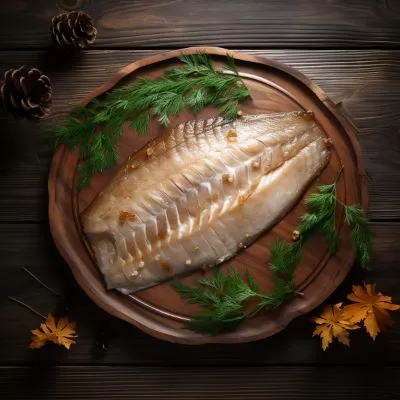Smoking whitefish is a delicious way to use your catch. It takes a little bit of time but the results are amazing.
Ingredients:
– 2 lbs lake whitefish fillets
– 1/4 cup kosher salt
– 1/4 cup brown sugar
– 1 tablespoon black pepper
– 1 tablespoon garlic powder
– Wood chips (such as apple, cherry, or hickory), soaked in water
Instructions:
1. Rinse the lake whitefish fillets under cold water and pat them dry with paper towels.
2. In a bowl, mix together the kosher salt, brown sugar, black pepper, and garlic powder to create the dry brine mixture.
3. Coat the fillets with the dry brine mixture, ensuring that they are evenly covered on all sides. Place the fillets in a glass dish or on a baking sheet, and refrigerate for about 2-4 hours. This will help the flavors penetrate the fish and firm up the texture.
4. After the brining time, rinse the fillets under cold water to remove excess salt and pat them dry again. Let them air dry for about an hour to form a pellicle, which is a slightly tacky surface that helps the smoke adhere to the fish.
5. While the fish is air drying, prepare your smoker. Preheat the smoker to around 200-225°F (93-107°C). Add the soaked wood chips to the smoker box or directly onto the coals.
6. Once the smoker is ready, place the whitefish fillets on the smoker grates. Close the lid and smoke the fish for about 2-4 hours, or until the internal temperature reaches 145°F (63°C). The time can vary based on the thickness of the fillets and your desired level of smokiness.
7. Check the smoker periodically to ensure that the temperature is consistent and to adjust the wood chips if needed.
8. Once the fish is fully smoked and cooked, carefully remove it from the smoker and let it cool slightly before serving.
9. Smoked lake whitefish can be enjoyed on its own, flaked into salads, or used in recipes like smoked fish dip.
Remember that smoking times can vary, so keep an eye on the temperature and adjust accordingly. Enjoy your delicious smoked lake whitefish!
Note: Always follow food safety guidelines and use a reliable meat thermometer to ensure the fish reaches a safe internal temperature.

